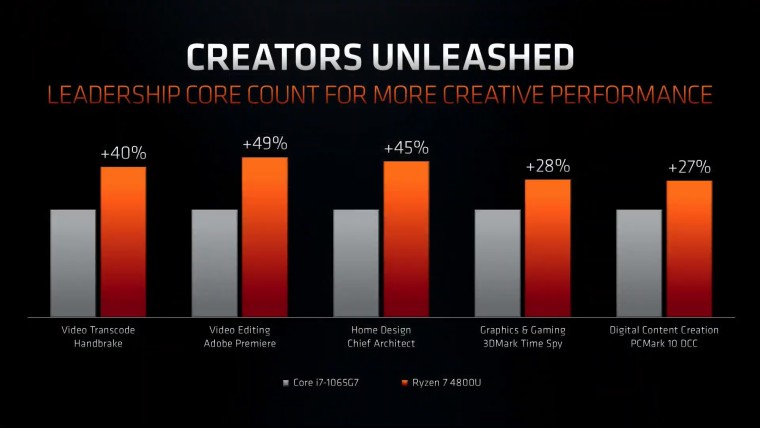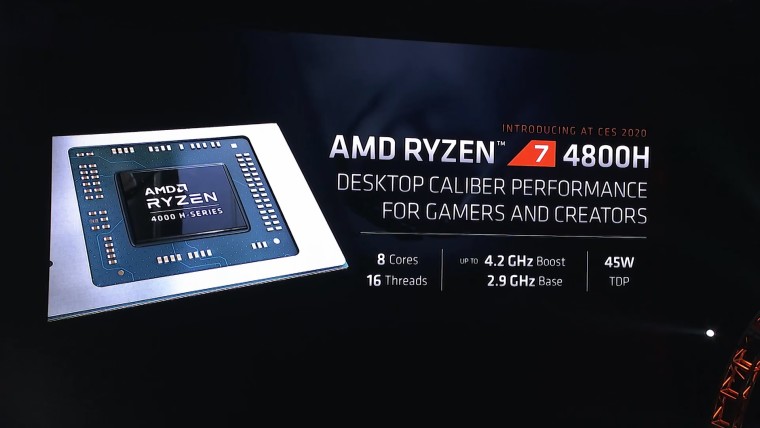
Today, in a press event before CES 2020, AMD unveiled Ryzen 4000 series processors for laptops, and they're the first-ever x86 processors built on a 7nm process. The new generation promises a significant performance leap, but also more power efficiency thanks to the smaller manufacturing process. Because of this, you can expect nearly twice the performance per watt compared to the previous generation.
The 4000 series will come in U (15W) and H (45W) series, plus Pro series for creatives. The company talked specifically about the high-end Ryzen 4800U, an 8-core, 16-thread CPU with a base clock of 1.8GHz and a boost clock of 4.2GHz.

This processor promises to outperform Intel's Ice Lake competitors, which are built on a 10nm process. Specifically, AMD compared the Ryzen 4800U to Intel's Core i7-1065G7, and AMD's platform managed to win by a small margin in single-threaded performance, but it absolutely crushed the Core i7 in multi-threaded performance, with a CineBench score that's 90% higher.

AMD also compared specific workloads, including Handbrake transcoding, Adobe Premiere editing, and more. AMD's Ryzen chip consistently beat the Intel competitor.

AMD also talked about the Ryzen 4800H, a 45W chip that's aimed at gamers that want desktop-level performance. This chip also has eight cores and 16 threads, but the base clock is 2.9GHz. When AMD promises desktop-level performance, it means it, and the company says the Ryzen 4800H offers more performance than Intel's Core i7-9700K, which is a 95W processor.

The new Ryzen processors will be in laptops coming this year, like Lenovo's Yoga Slim 7 which was announced earlier today, which has the Ryzen 4800U. The Ryzen 4800H, for its part, will be in laptops like ASUS' ROG Zephyrus G14, which is coming in February.
AMD also talked about a new technology called SmartShift, a technology that allows workloads to be shifted between the GPU and CPU, even in machines with discrete graphics. This helps performance significantly, and as long as it's built into the machine from the start, it shouldn't require any thermal design changes. In early testing, AMD says it's seen performance improvements of about 10% in The Division 2.

















25 Comments - Add comment